Grass, you dig?
>> Monday, April 25, 2011 –
grasses,
transplant
The hardest plant-related projects in my garden always involve grasses. Digging bamboo rhizomes (bamboo is in the grass family, did you know?). Removing turf grass when creating a new planting area. Removing or transplanting ornamental grasses. These are all hard work. About ten days ago I did one of these "little" projects, and I can't believe I almost forgot to post about it.
I removed a large ornamental grass that I was no longer happy with: this Miscanthus sinensis that I grew from seed a few years back.
It was a seedling from my 'Gracillimus', and didn't have the same characteristics as the parent plant. It's blades were too wide, it flopped over quite easily, and it seemed to die out in the center of the clump much more than other Miscanthuses I have.
Here's what the blades look like:
Here's what 'Gracillimus' looks like:
You can see it's a much thinner blade, which gives the plant a nicer overall look. For comparison, here's another nice Miscanthus cultivar, 'Morning Light':
It's got a thin blade like 'Gracillimus', but has white blade edges, which gives the plant a brighter look. It's also a little smaller than 'Gracillimus'.
The plant I'm going to remove is also much too close to one of my bamboo beds:
and it's definitely dying in the center:
It's just got to come out! Since these grasses form such large woody clumps, I won't even bother trying to use a shovel to get this out -- I'm going straight for the digging bar:
Since I have no plans to save any of the grass I'm removing, I don't have to worry about the size of the clumps I get out -- I can just chop in and pry out:
After a surprisingly short time with the digging bar, I got everything out:
It's so nice having a tool that you can pry with using as much force as you want. Any wooden shovel handle would have probably broken by now.
There was one one bamboo rhizome cutting through this area from my nearby Pleioblastus fortunei (Dwarf whitestrip bamboo):
I'll pot that piece up and see if it will survive, even though it doesn't really have many roots. I haven't taken divisions of that bamboo yet, and it would be good to have a few potted up.
So now I've got an empty space instead of an unwanted grass:
A nice clean slate where I can plant anything I want, absolutely anything... I know, how about an ornamental grass?
I'm going to put this 'Gracillimus' division here instead. I took this division a couple of years ago and it's been in a temporary spot, waiting for its opportunity. This is its chance!
I decided not to take photos of this part of the process, since it's pretty similar to what I already showed when removing the unwanted grass. The difference is that I didn't chop this up into parts, but managed to pry the whole thing out of the ground in one piece. Then I dragged it over to the new planting hole and dropped it in.
I'll post photos of the newly-planted grass soon, but there's one thing I want to point out: although it's fine to remove an entire ornamental grass while it's dormant, if you're going to keep the plant (relocate it for instance) or take a division that you want to keep (pot up, give away, etc.) I've read that you should do that only after the plant has shown signs of waking up and has started growing again. Apparently the plant will do better and recover sooner when you do this.
So now I've got a wheelbarrow overflowing with unwanted grass divisions:
These are solid and heavy woody chunks, and I don't want to put them straight onto the compost pile, as I don't want them to take root and start growing back there.
So I'll put them on the driveway for a while first to make sure they expend all of their energy and die. Then they'll go onto the compost pile.
I also found several new seedlings in the area while I was weeding:
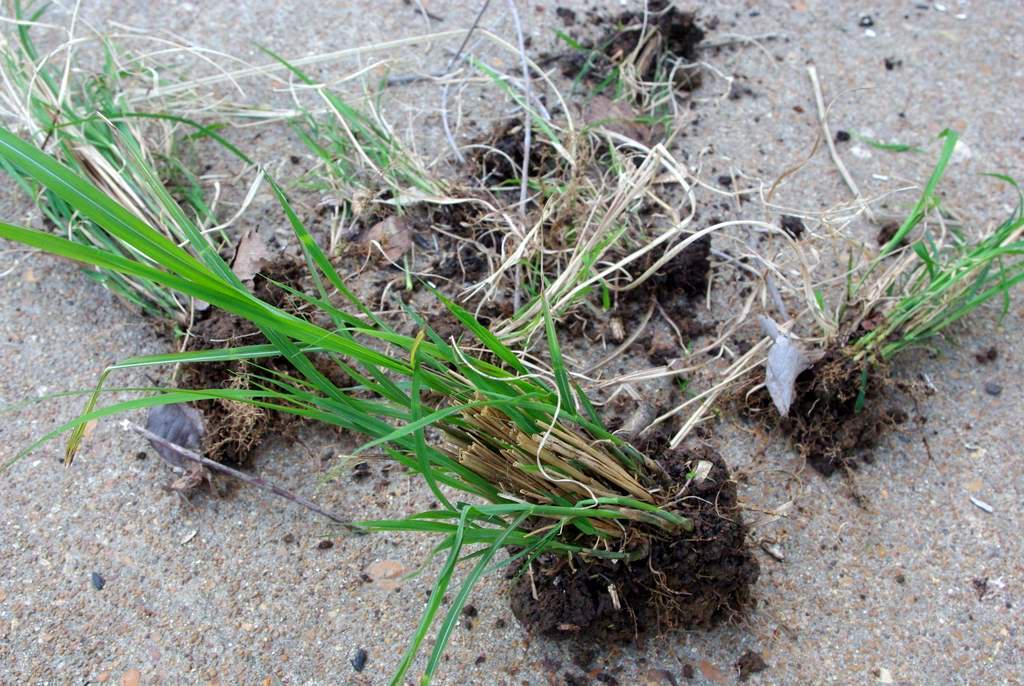 |
| Seedlings of all sizes. All are unwanted and destined for the compost pile. |
Based on my experience with this grass grown from seed, I have no interest in letting any of these grow, so they'll go straight onto the compost pile.
I'm glad to see this problem grass go, and am looking forward to seeing what the new nicer grass will look like in its place. Considering that the bamboo next to it (Phyllostachys nigra, "black bamboo") is putting out a lot of good-sized shoots right now, this end of the bed is going to look a lot better this year than it ever has before. Exciting!
.
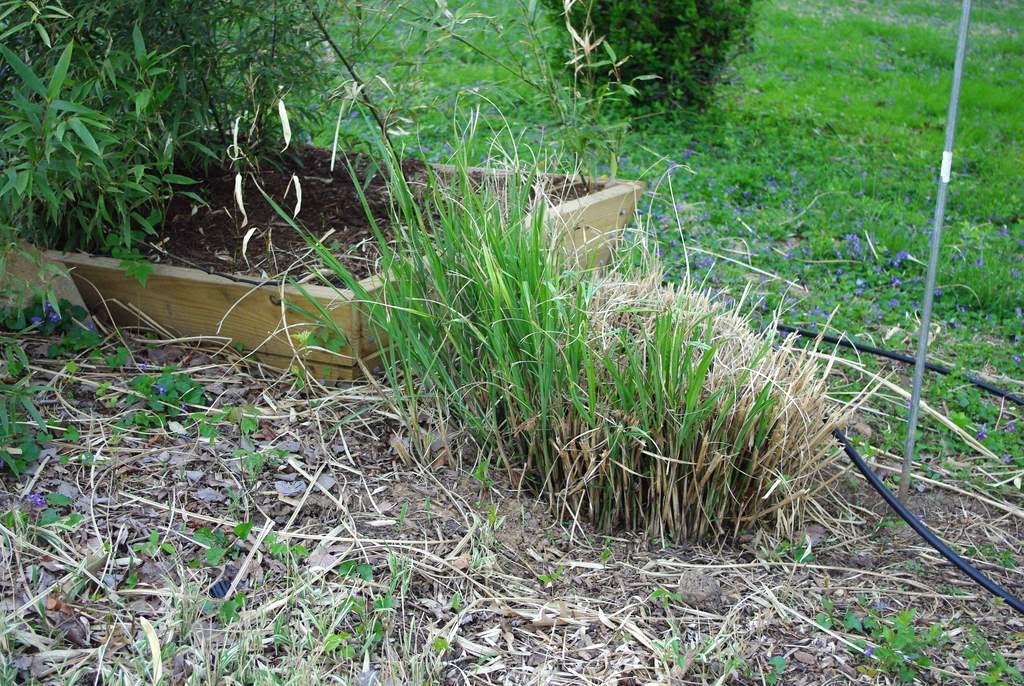

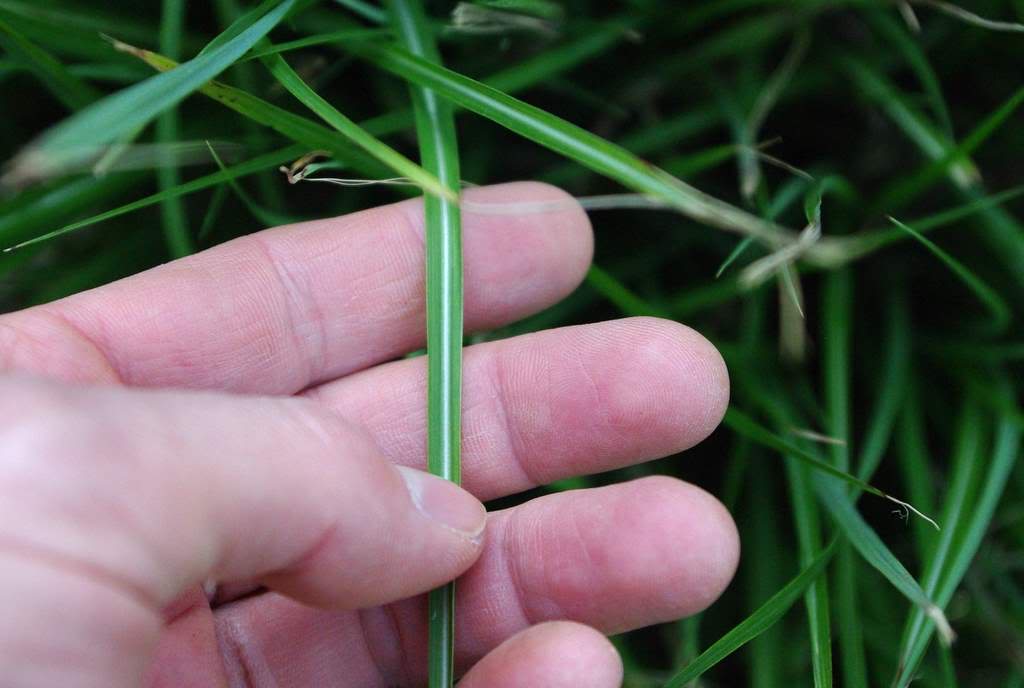


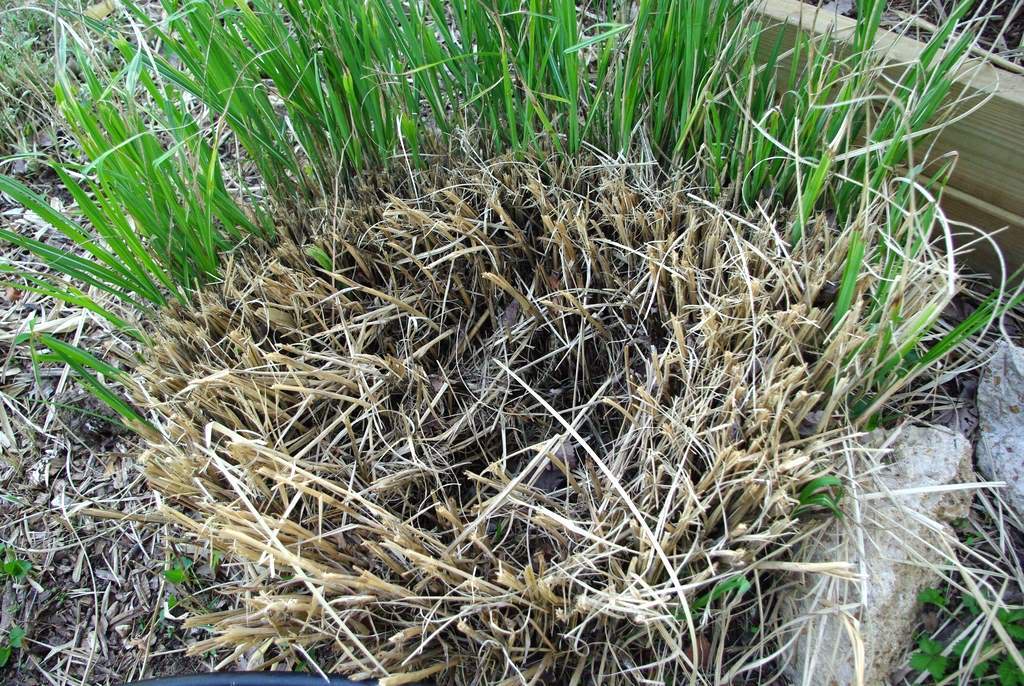
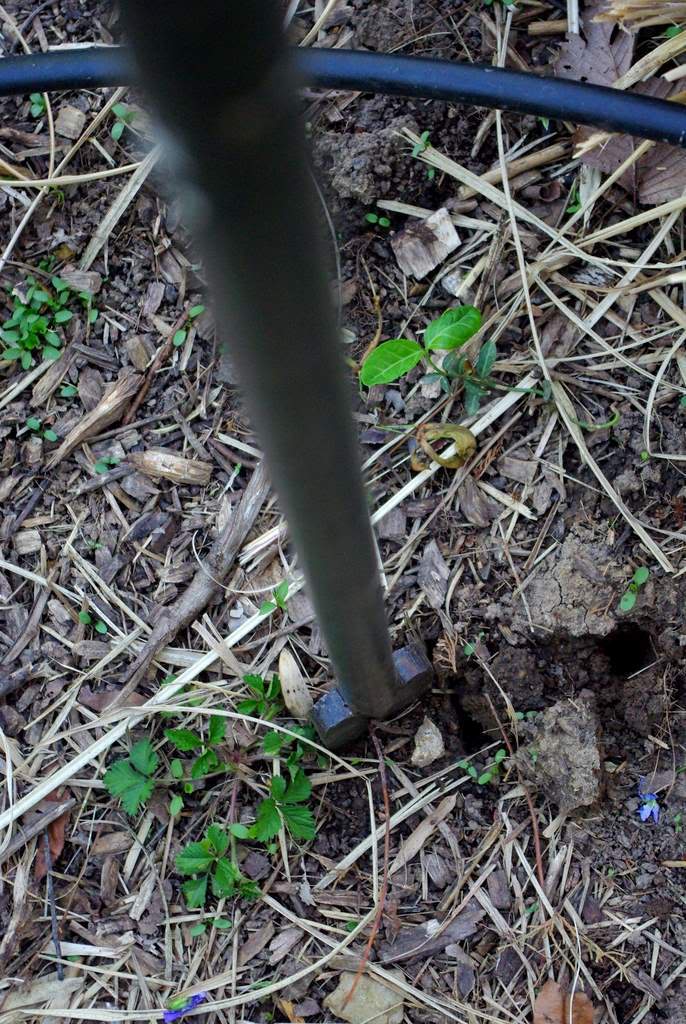



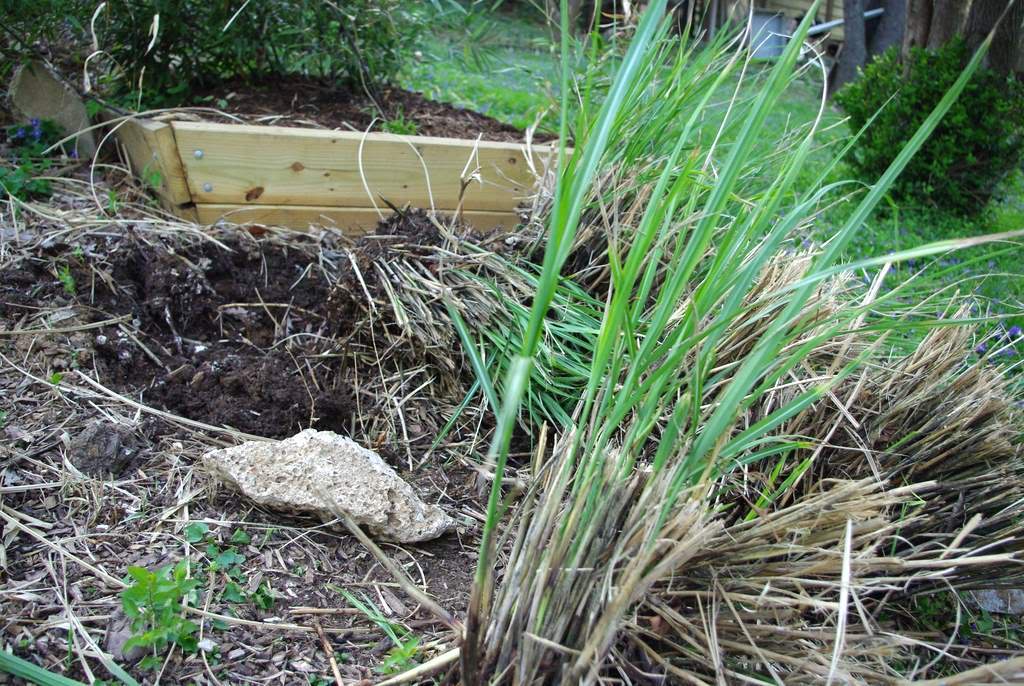
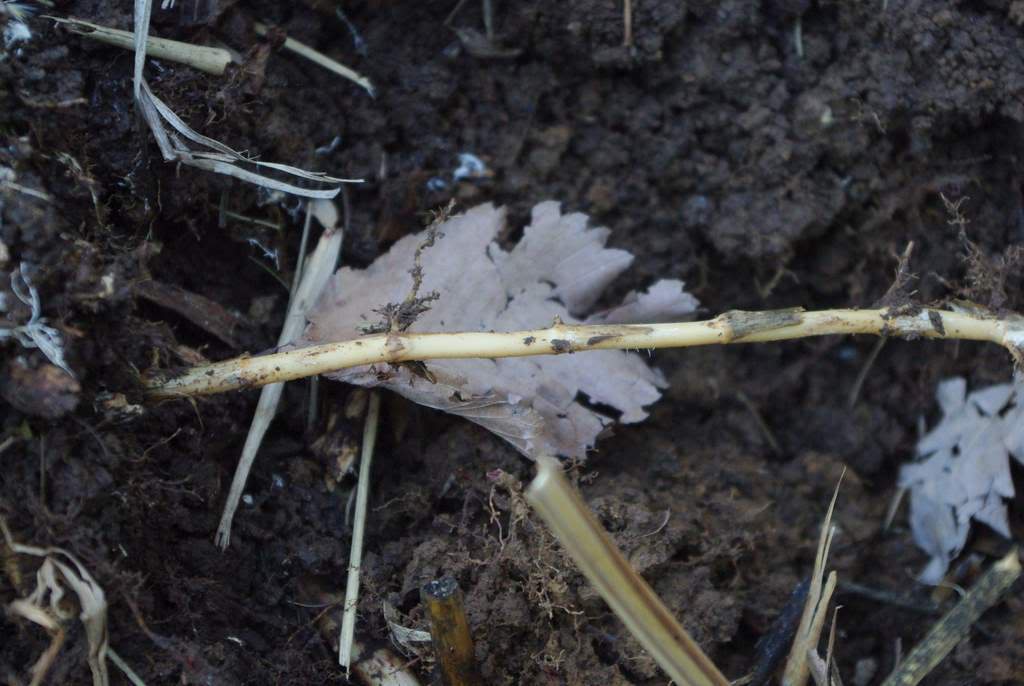

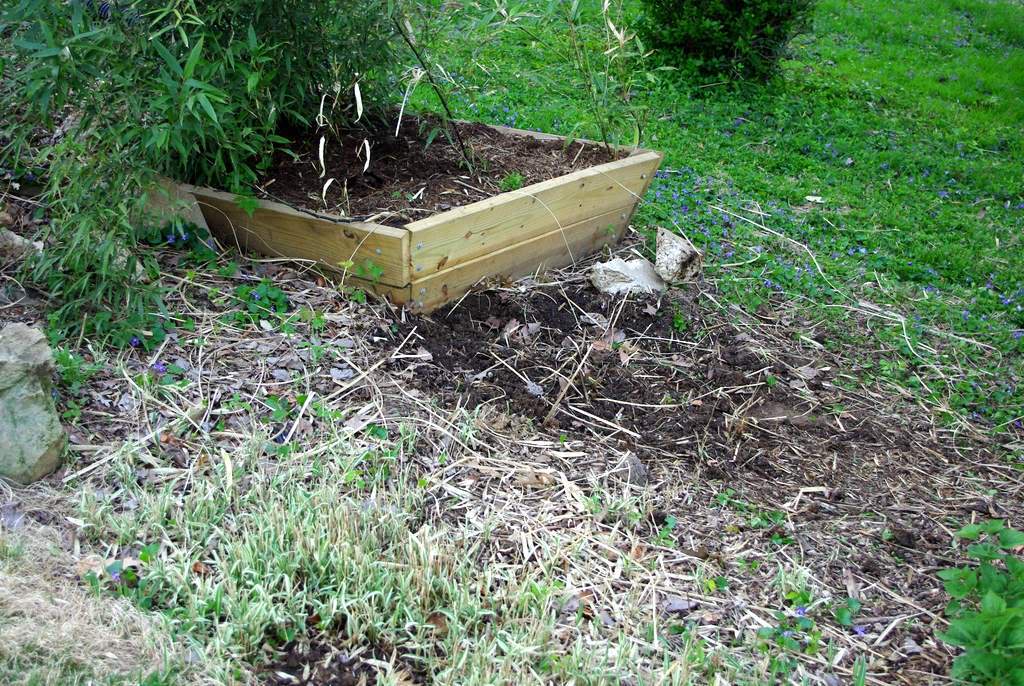

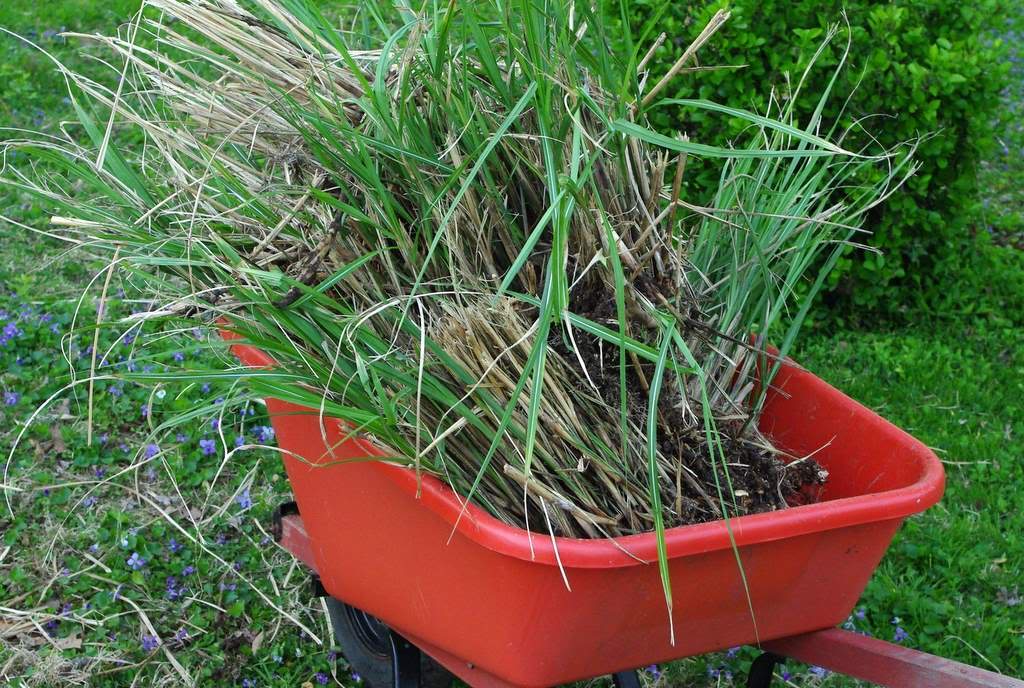







I've decided that you have a thing for grasses. A very large thing.
Very interesting that your Gracillimus seedlings are so different from the parent plant. I wonder what they are reverting to? The species? I must say I don't even know what the blades of a "regular" Miscanthus sinensis look like.
:: Bamboo and More ::
Thanks for showing us a comparison of the 'thicker' blade vs. the 'thinner' blade. That was interesting. I also realize I need one of those digging bars! Looks like a lot of work!
You certainly like grasses don't you !! My favouite here is Midcanthus sinensis Malepartus, the rustle as it sways in the breeze, the colour purple of the flowers, and the gold of the leaves in the autumn, wonderful plant!
Alan,
I would love a detailed account of the "life of your black bamboo." Many of my nigras were unhappy with this past winter, and I'm in a MUCH warmer zone than you. I'm amazed that it's working for you in St. Louis! Also just bought a digging bar ... LOVE that tool!
All the best, -jeremy
The right tool can make all the difference in the world. I wish I had more of the right tools for my garden!
Jeremy: My nigra had 5' flexible culms last year, so I was able to bend them down and tarp over them for the winter. Based on the sizes of the shoots coming up now, I won't be able to do this next year, at least not with every culms. So we'll see what happens.
ive just brought a Gracillimus and am disappointed after reading all this to see that mine is also the broader blade type. it looks like the nursery had dug it out the ground and so was also probably a seedling and not the mother plant.
i hope the look wasnt too different from the narrow version :/
0024167: For me the seedlings were floppier -- didn't have as nice a form as Gracillimus. It takes a few years to find out.
i found a true gracillimus today and the leaf is indeed much narrower (5mm compared to 10mm in this version), my gracillimus is more closer to a regular miscantuhs sized leaf.
ive read miscanthus often doesnt inherit the same characteristics as the parent if grown from seed, so im guessing mine and maybe yours was not a clone made from a division of the parent plant but a seed grown plant.
im glad i saw your page as otherwise i probably would also have been digging mine out in a few years time.